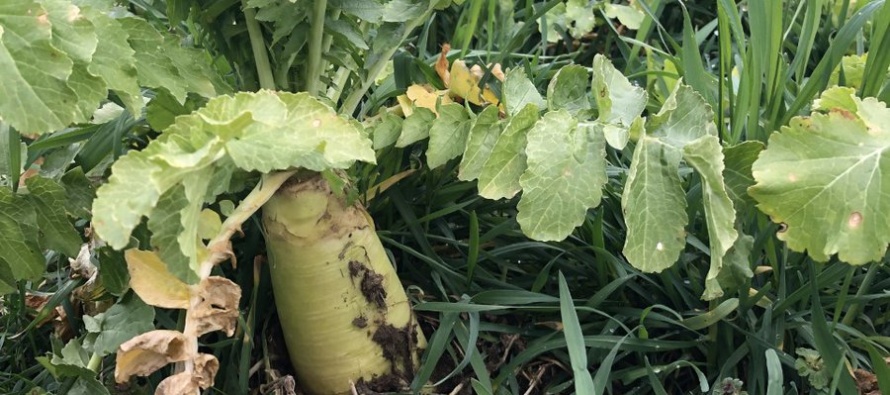Managing Soils for Carbon Sequestration

Related Articles
- Fertilizing Cotton with Poultry Litter 5
- Spring Nitrogen Fertility Suggestions for Wheat 0
- Micronutrients for Mississippi Crop Production 4
Latest Tweets
Private and public sector stakeholders are striving to boost soil carbon (C) as a climate migration strategy. This note will focus on the science of soil C, and management practices that may increase it. Carbon markets, public policy, and individual commercial C traders are not in the scope of this article.
In plants, photosynthesis converts carbon dioxide and water into energy; it removes C from the atmosphere and converts to plant products that sustain human life. What is not harvested in plant systems as food or fiber is left on the field (residue) or in the field (root systems) where it provides raw material for a new growth and harvest cycle.
Carbon thus captured during growth and returned to the soil as stalks or decaying root systems is the chief source of soil C; anything that was once living is incorporated into soil organic matter (SOM). Soil C is dynamic; it undergoes multiple biological transformations that process it from recognizable forms e.g., stalks, to more microbe-resistant forms, now thought to be closely absorbed to soil solids. Carbon may be lost to the atmosphere as these processes progress, largely as carbon dioxide dissipating into the atmosphere. Carbon may also dissipate as methane from flooded soils. In this case, some equilibrium maybe reached, but still can be disrupted when the soil is aerated with tillage.
Carbon makes up to 50 to 58% of SOM. Stabilized SOM contributes to several soil functions, and in a larger sense to positive ecosystem services. It is a recycling center for other plant nutrients including nitrogen and sulfur. As seen in the process described above SOM is critical for beneficial soil bacteria and fungal function. Chemically, it can buffer against undesired sudden nutrient and pH changes, as well as store and release water to plants. Soil organic matter buffers against erosion through its roles in soil aggregate formation and soil structural stability.
Exactly how much C is in soil depends on the balance between additions via plant residues or manures, and losses as carbon dioxide or methane, or via leaching as dissolved organic C. The pathways to net soil C increase (sequestration) are either increase the rate of addition or decrease the rate of loss.
Managing for C sequestration is managing for soil health and soil fertility: keep soil covered as much as possible with growing plants, and with minimum disturbance, i.e., tillage. Crop management technologies or practices that increase soil C include rotations with higher residue crops, cover crops, green manuring where appropriate, and shorter intervals between crops. Manure or biosolids land applications not only add C itself, but also foster plant growth (more residue), and improve soil physical properties.
It takes time to sequester C with these practices both chemically and physically, and conversely it quickly is prone to loss if not actively managed. More information is needed regarding C stability or persistence promoting mechanisms within the complex soil environment. Measurement methodology for verification continues to evolve and is undergoing refinement.
The near-term producer action with the evolving situation is to document fields and farms that have employed the conservation practices that enhance C sequestration – conservation tillage, cover crops, rotations etc. This information will assist landowners and land managers as the private markets, verification science, and public policies move forward.





Let me tell You a sad story ! There are no comments yet, but You can be first one to comment this article.
Write a comment